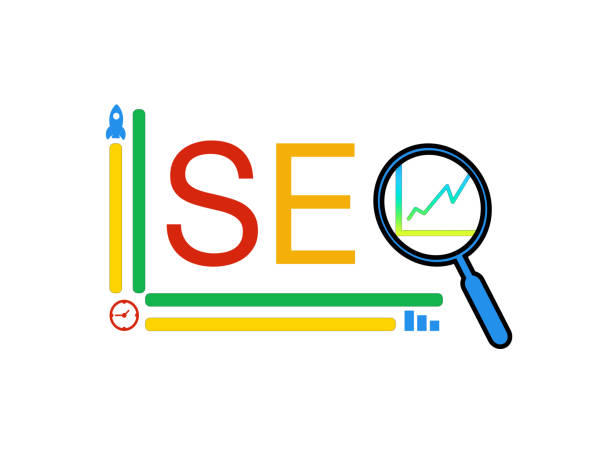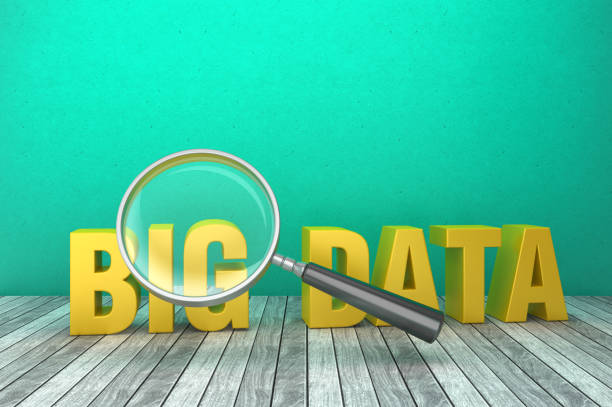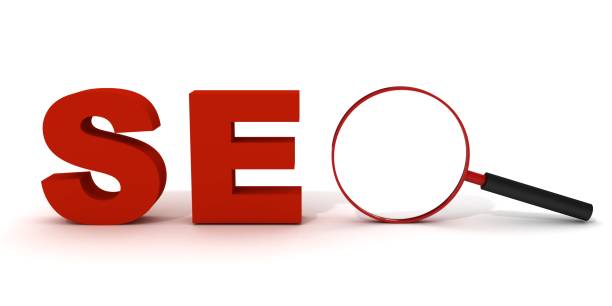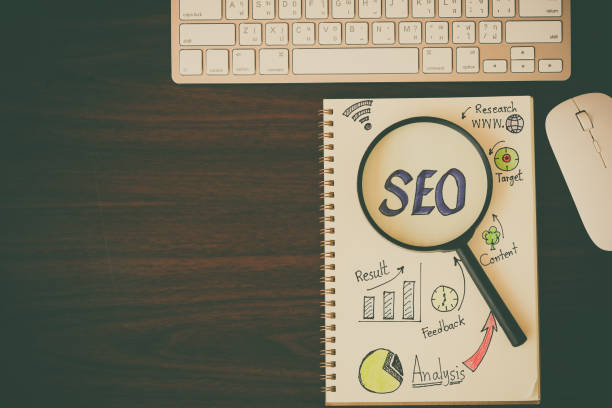What is On-Page SEO and Why Does it Matter?

What is On-Page SEO and Why Does it Matter?
On-Page SEO refers to a set of actions you take within your website to improve your site’s ranking in Google search results and other search engines.
These actions include optimizing content, site structure, code, and various page elements.
In fact, unlike Off-Page SEO, On-Page SEO is entirely under your control, and you can significantly impact your site’s ranking by making appropriate changes. The importance of On-Page SEO lies in the fact that it helps search engines better understand your site’s content and recognize its relevance to user searches.
By properly implementing On-Page SEO, you tell search engines what your site is about and what value it offers to users. This allows your site to appear in relevant search results and attract more traffic.
For example, if your site is in the business of selling sports equipment, by optimizing the content of your product pages and using appropriate keywords, you can improve your site’s ranking in searches related to “buying sports equipment.”
More information about SEO is available.
Therefore, On-Page SEO is one of the most important factors for success in the online world, and every business owner who wants to increase their traffic and sales should pay special attention to it.
Does your company’s website perform as your brand deserves? In today’s competitive world, your website is your most important online tool. Rasaweb, a specialist in designing professional corporate websites, helps you to:
✅ Attract credibility and customer trust
✅ Convert website visitors into customers
⚡ Get free advice!
Keyword Research – The First Step in On-Page SEO

Keyword Research – The First Step in On-Page SEO
Keyword Research is the process by which you identify the words and phrases that users use in search engines to find the information, products, or services they need.
These words and phrases are known as keywords and play an important role in On-Page SEO.
Because by using these words in your site’s content, you inform search engines about what your site is about and what relevance it has to user searches.
To perform keyword research, you can use various tools such as Google Keyword Planner, Ahrefs, SEMrush, and Moz Keyword Explorer.
These tools help you find the search volume of different keywords, the level of competition for them, and related keywords.
For example, if your site is in the business of teaching English, using these tools, you can find keywords such as “online English training,” “best English language school,” and “learning English at home.”
After identifying the appropriate keywords, you should use them naturally and relevantly in your site’s content.
This allows your site to appear in relevant search results and attract more traffic.
A keyword research guide can be very helpful.
In the process of On-Page SEO, keyword optimization should be carefully considered in order to achieve the best results.
Optimizing the Page Title (Title Tag) and Meta Description

Optimizing the Page Title (Title Tag) and Meta Description
The Title Tag and Meta Description are two important HTML elements that are displayed in search results and play an important role in attracting users to your site.
The Title Tag is the main title of your page that is displayed in the browser’s title bar and in search results.
The Meta Description is a summary of your page’s content that is displayed below the page title in search results.
Optimizing these two elements for On-Page SEO is very important because it helps search engines better understand the topic of your page and shows users what value your page has for them.
To optimize the Title Tag, you should use the main keywords of your page and write the title in an attractive way that is relevant to the content of the page.
Also, the length of the Title Tag should not exceed 60 characters.
To optimize the Meta Description, you should write an attractive and brief summary of your page’s content and use relevant keywords.
The length of the Meta Description should not exceed 160 characters.
An optimized Title Tag and Meta Description can increase your site’s click-through rate (CTR) in search results and drive more traffic to your site.
Meta optimization training will help you.
| Element | Description | Best Practices |
|---|---|---|
| Title Tag | The page title that is displayed in search results. | Use keywords, be attractive and brief (up to 60 characters). |
| Meta Description | A brief description of the page content that is displayed below the title in search results. | Attractive and brief summary, use of keywords (up to 160 characters). |
Content Optimization – The King of On-Page SEO

Content Optimization – The King of On-Page SEO
Content is king! This phrase is often heard in the world of On-Page SEO and well illustrates the importance of content.
Quality and valuable content not only attracts users to your site, but also helps search engines better understand the topic of your site.
To optimize content, you should write your content based on researched keywords and update it regularly.
Also, you should structure your content in a way that is easy for users to read.
Using titles and subtitles, short paragraphs, and images and videos can help improve content readability.
In addition, you should write your content in a unique and engaging way to encourage users to read it.
Copying content from others not only hurts your site’s SEO, but can also lead to your site being penalized by search engines.
By producing quality and valuable content, you can improve your site’s ranking in search results and attract more traffic.
In On-Page SEO, good content is considered the most important principle.
Do visitors to your online store leave before making a purchase? Don’t worry anymore! With Rasaweb’s professional online store website design services, solve the problem of not converting visitors into customers forever!
✅ Significant increase in conversion rate and sales
✅ Unique and engaging user experience
⚡ Contact us now for a free consultation!
Image Optimization – Increasing Site Speed and Ranking

Image Optimization – Increasing Site Speed and Ranking
Images play an important role in the attractiveness and readability of your site’s content, but if not properly optimized, they can slow down your site’s loading speed and harm your site’s SEO.
To optimize images, you should use the appropriate format (such as JPEG for large images and PNG for high-quality images), appropriate size (less than 100 KB), and the appropriate file name (including keywords).
Also, you should write alternative text (Alt Text) for all your images.
Alternative text is text that is displayed instead of the image if it is not displayed and helps search engines understand the topic of the image.
By optimizing images, you can increase your site’s loading speed and improve your site’s ranking in search results. In On-Page SEO, the page loading speed is one of the main factors in optimization.
A image optimization guide will be useful for you.
Friendly URL Structure – A Way to Improve User Experience

Friendly URL Structure – A Way to Improve User Experience
Your site’s URL structure should be understandable for both users and search engines.
Friendly URLs are URLs that are short, readable, and include relevant keywords.
For example, instead of using long and complex URLs like “www.example.com/page?id=123”, use short and meaningful URLs like “www.example.com/seo-internal”.
Friendly URLs help users identify the topic of the page before clicking on it and help search engines better understand the page’s relevance to user searches.
To create a friendly URL structure, you should use the main keywords of your page, use lowercase letters, and avoid using special characters and spaces.
Having friendly URLs is an important factor in On-Page SEO and can improve your site’s user experience.
Internal Linking – Creating a Network of Connections on the Site

Internal Linking – Creating a Network of Connections on the Site
Internal Linking is the process by which you link different pages of your site to each other.
This makes it easier for users to navigate your site and access the information they need.
Also, internal linking helps search engines better understand your site’s structure and identify the important pages of your site.
To perform internal linking, you should link the relevant pages of your site to each other and use appropriate Anchor Text.
Anchor text is the text that you click on to be taken to another page.
The anchor text should be relevant to the content of the destination page and use the main keywords of the page.
By performing internal linking, you can improve the ranking of important pages of your site in search results and enhance your site’s user experience.
In On-Page SEO, correct and principled linking is of great importance.
| Internal Linking Strategy | Description | Benefits |
|---|---|---|
| Link to Related Pages | Linking related pages to each other on the site | Increase user dwell time, improve ranking of related pages |
| Use Appropriate Anchor Text | Using relevant keywords in the anchor text | Helps search engines better understand content, improves SEO |
| Link to Important Pages | Linking to important pages of the site from other pages | Increase the credibility of important pages, drive traffic |
Website Speed Optimization – Better User Experience and Higher Ranking

Website Speed Optimization – Better User Experience and Higher Ranking
Website speed is an important factor in user experience and On-Page SEO.
Users who enter your site expect the site pages to load quickly.
If your site speed is slow, users will leave your site and go to other sites.
Also, Google and other search engines consider site speed as one of the ranking factors.
To optimize site speed, you can use various methods such as reducing image size, using a CDN (Content Delivery Network), enabling Gzip compression, and using speed optimization plugins.
By optimizing site speed, you can improve your site’s user experience and increase your site’s ranking in search results.
Test your site speed and fix the problems.
Did you know that 94% of first impressions of a company are related to its website design?
Rasaweb helps you create the best first impression by providing professional corporate website design services.
✅ Create a professional and reliable image of your brand
✅ Easier attraction of potential customers and improvement of online positioning
⚡ Get a free corporate website design consultation
Responsive Design – Compatibility with All Devices

Responsive Design – Compatibility with All Devices
Given the increasing use of mobile devices, responsive design is essential for your site.
Responsive design means that your site automatically adapts to the screen size of different devices (such as mobile, tablet, and computer).
If your site is not responsively designed, users who enter your site from mobile devices will have a bad user experience and will quickly leave your site.
Google also considers responsive design as one of the ranking factors.
Therefore, if you want to improve your site’s ranking in search results, you should use responsive design for your site.
In On-Page SEO, mobile-friendliness is one of the most important principles.
Make sure your site displays correctly on all devices by using responsive design.
Checking and Fixing Website Errors – Maintaining Website Health and SEO

Checking and Fixing Website Errors – Maintaining Website Health and SEO
Checking and fixing website errors is one of the most important actions in maintaining website health and On-Page SEO.
Errors such as 404 errors (page not found), 500 errors (server error), and broken links can harm your site’s SEO and also affect your site’s user experience.
To check and fix website errors, you can use various tools such as Google Search Console, Ahrefs, and SEMrush.
These tools help you identify your site errors and fix them quickly.
By checking and fixing website errors, you can maintain your website health and improve your site’s ranking in search results.
Frequently Asked Questions
| Question | Answer |
|---|---|
| What is a Meta Title and why is it important in On-Page SEO? | The meta title is the most important element of On-Page SEO, which is displayed at the top of the browser tab and in search results. This title helps search engines and users to understand the main topic of the page and should include the main keyword. |
| What role does a Meta Description play in On-Page SEO? | The meta description is a short summary of the page’s content that is displayed under the title in search results. Although it does not directly affect ranking, its appeal can increase click-through rate (CTR). |
| How should keywords be used in page content? | Keywords should be used naturally and relevantly in strategic locations such as the title, headings, first paragraph, and body of the text. Avoid over-stuffing keywords (Keyword Stuffing). |
| What is the importance of quality and comprehensive content in On-Page SEO? | Quality, unique, informative, and comprehensive content that meets the user’s needs is of great importance. Search engines give a higher ranking to content that creates real value. |
| What is the application of heading tags (H1-H6) in the structure of On-Page SEO? | Heading tags (H1, H2, H3, etc.) are used to structure content and specify the importance of different sections. H1 is the main title of the page and each page should have only one H1. Other tags are used for subtitles. |
| How can we optimize images to improve On-Page SEO? | To optimize images, use descriptive alt text that includes relevant keywords, reduce the image file size without sacrificing quality, and use meaningful and relevant file names. |
| What features does a friendly URL have for On-Page SEO? | A friendly URL should be short, readable, descriptive, include main keywords, and be free of extra characters. The URL structure should be hierarchical and logical so that it is understandable for both users and search engines. |
| How does internal linking help On-Page SEO? | By connecting related pages to each other, internal linking helps users and search engine crawlers to better understand the site structure, transfer page credibility, and increase the time the user spends on the site. |
| What is the impact of page load speed on On-Page SEO? | Fast loading speed is critical for both user experience and SEO ranking. Slower pages may be ignored by search engines and lead to an increase in bounce rate. |
| Why is mobile-friendliness so important in On-Page SEO? | Given the increasing number of searches through mobile devices, having a responsive and mobile-friendly site is essential for user experience and ranking in search results (Google’s mobile-first indexing). |
And other services of Rasa Web Advertising Agency in the field of advertising
Intelligent Marketing Automation: A dedicated service for customer acquisition growth based on marketing automation.
Intelligent Direct Marketing: An effective tool for managing campaigns with the help of dedicated programming.
Intelligent Google Ads: A combination of creativity and technology to increase sales by optimizing key pages.
Intelligent Marketing Automation: A professional solution for online growth with a focus on dedicated programming.
Intelligent Brand Identity: A creative platform to improve click-through rates with intelligent data analysis.
And more than hundreds of other services in the field of internet advertising, advertising consulting and organizational solutions
Internet Advertising | Advertising Strategy | Reportage Advertising
Resources
Inbound Marketing Strategies at Hubspot
,On-Page Optimization at Moz
,On-Page SEO Guide at Search Engine Journal
,What is On-Page SEO? At Semrush
? For a powerful presence in the digital world, Rasaweb Afarin is with your business by providing the best digital marketing services, including corporate website design.
📍 Tehran, Mirdamad Street, next to the Central Bank, South Kazerun Alley, Ramin Alley, No. 6



